Can You Microwave Paper Takeout Boxes? Essential Safety Tips Revealed
By Morten Numrich · 3. April 2024
Wondering, “can you microwave paper takeout boxes” without risking a mishap?
Let’s get straight to the point.
The answer isn’t a simple yes or no – it depends on several factors, including the type of paper box🥡 and any symbols indicating microwave safety.
This article will guide you through identifying the right kind of paper boxes for microwaving, understanding safety symbols, and ensuring your leftovers heat up without incident.
Decoding the Symbols: Is Your Paper Takeout Box Microwave Safe?
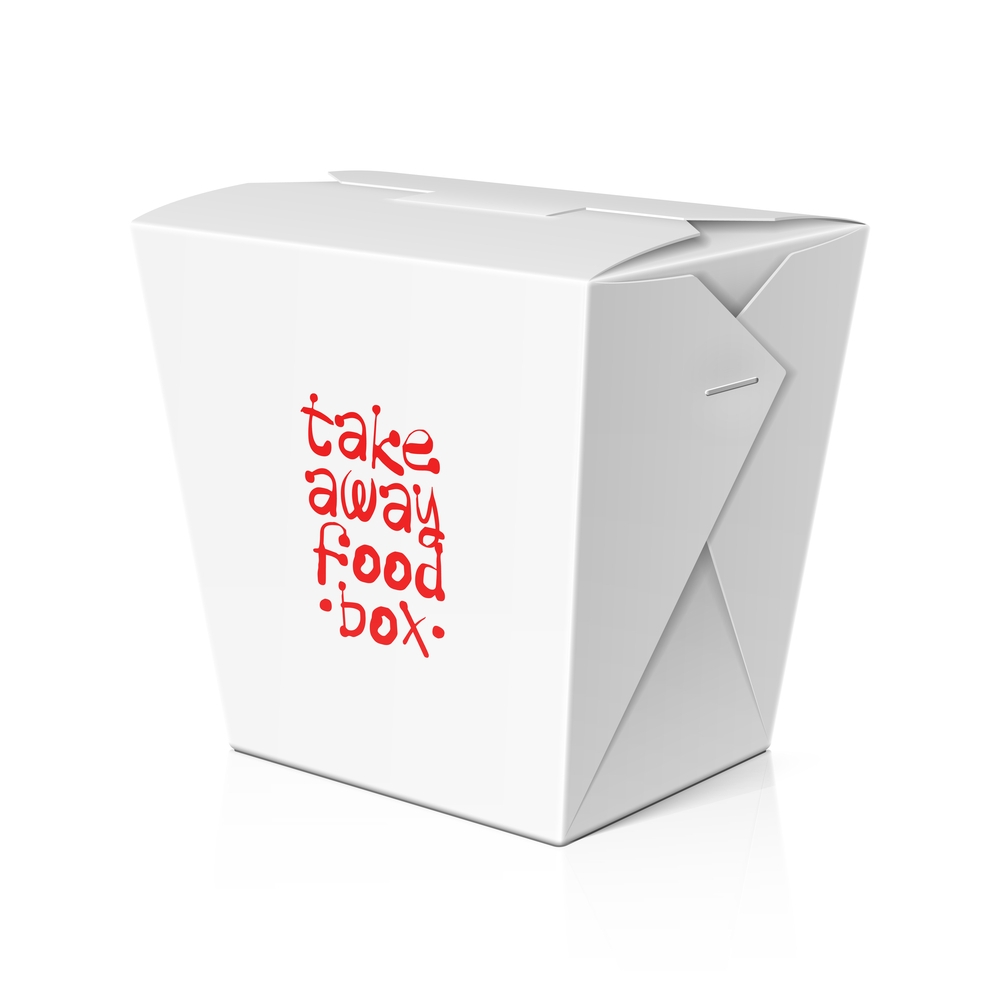 take away food noodle box
take away food noodle box
You’ve got leftover pizza in its cardboard box and you’re contemplating, “Can I microwave this?”
The answer lies in understanding the mysterious symbols that grace the bottoms and sides of your takeout containers.
Your journey towards safely reheating your food begins with decoding these microwave-safe labels.
Not all heroes wear capes; some come in the form of tiny wavy lines on your paper boxes!
Understanding Microwave Safe Labels
Now, you may be wondering, “What do these symbols even mean?” Don’t worry, we’ve all been there.
The most common microwave-safe symbols are those wavy lines or a microwave with wavy lines inside it.
Think of them as the ‘green light’ for your microwaving journey.
These symbols are typically found at the bottom of the container, shyly hiding away.
Before subjecting your food to the power of radio waves, ensure these symbols are present.
The Meaning Behind the Symbols
We’ve identified the symbols, but what do they actually mean?
They’re not just random doodles, after all.
When you see these symbols, it means the container has been rigorously tested to ensure that microwaving won’t release harmful chemicals into your food.
Sounds pretty important, right?
However, the microwave isn’t suitable for all containers.
Some containers wear a ‘no entry’ sign for microwaves, symbolized as a microwave with a line through it.
And remember, not all plastic containers are created equal. For example, Polypropylene (#5 PP) is known for microwave safety, while APET(E) (#1) is a microwave no-go. So, always check the symbols and stay on the safe side!
Heating Up: How to Properly Microwave Paper Takeout Boxes
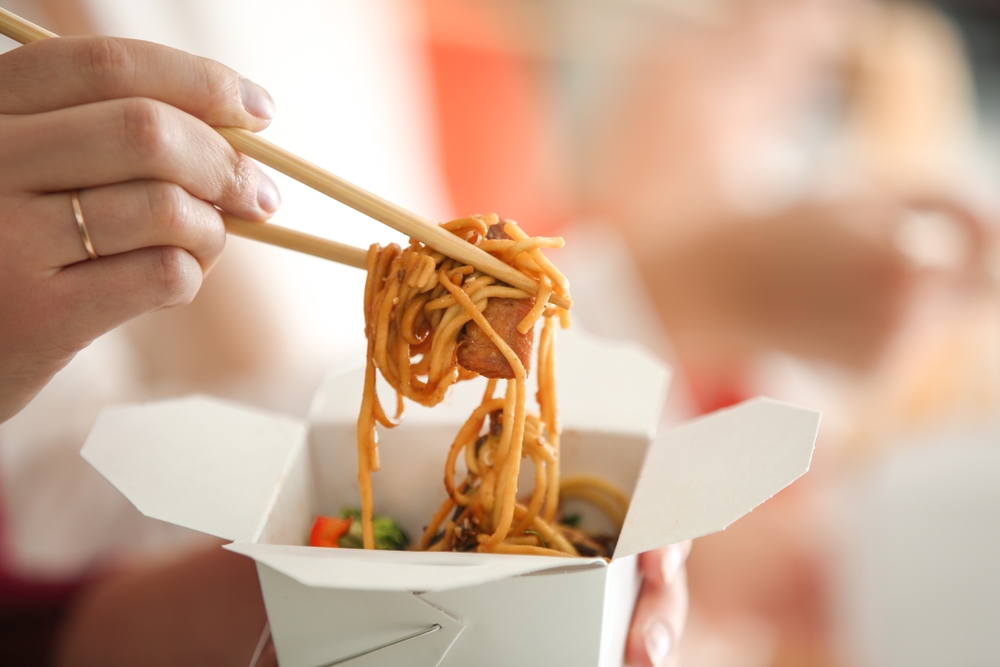 woman eating chinese noodles takeaway box
woman eating chinese noodles takeaway box
Having decoded the symbols, it’s time to get to the practical part – reheating your food in paper takeout boxes.
It’s not as simple as shoving the box in the microwave and hitting ‘start’.
There are some key steps you need to take to ensure a safe and effective microwaving session.
First off, inspect the box for any metal components.
Yes, those innocuous-looking handles or clips could cause sparks or even a mini-fireworks display in your microwave (and not the fun kind)! Next, consider adjusting your power settings.
Don’t worry, we’ll guide you through all these steps in the upcoming subsections.
Checking for Metal Components
You may be thinking, “Metal? In a paper box?” Surprisingly, yes!
Many paper takeout boxes come with metal handles, rims, or even staples, adding a touch of structural integrity and style.
However, these metal components, along with aluminum foil, can turn your microwaving session into a spark-filled spectacle.
Ensure all metal parts – handles, staples, and twist ties – are removed from the box before microwaving.
If these components aren’t removed, they can cause overheating, leading to a fire, and damage your precious appliance.
Adjusting Power Settings
The next item on our microwaving to-do list is tweaking the power settings.
Just like the speed limit on roads, microwaves have their own ‘safety speed.’
Using the microwave’s low power setting can enhance safety when microwaving your paper takeout boxes.
When warming food in cardboard containers, select the low power setting and keep the microwaving time below 2 continuous minutes.
Also, remember to arrange your food evenly in a single layer, leaving space between pieces, for uniform heating.
This way, you avoid overheating any specific part of the box, and your food gets heated evenly. It’s a win-win!
Potential Hazards: What Makes Some Paper Boxes Unsafe for Microwaves?
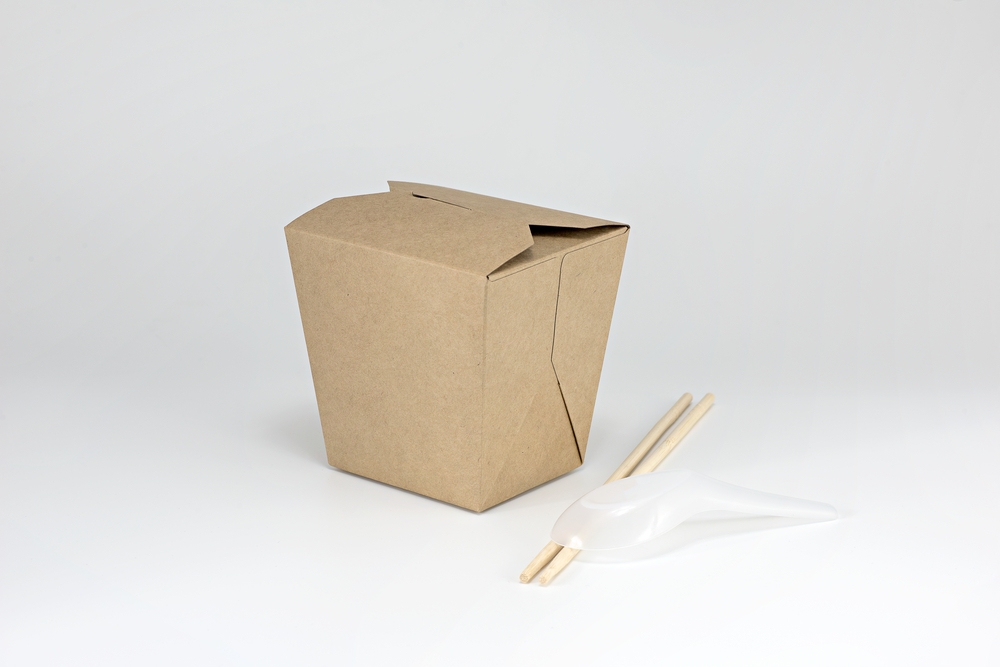 brown paper cardboard food box
brown paper cardboard food box
You might be thinking, “It’s just a paper box, how risky could it be?” As it turns out, a lot! Not all paper takeout boxes are microwave-friendly.
Some can pose significant safety hazards, turning your quick meal prep into a potential disaster.
Cardboard takeout boxes often contain glues, waxes, or metals – ingredients that can pose fire or spark hazards.
While some paper takeout boxes are designed with microwave use in mind, it’s always crucial to double-check.
So, let’s dive deeper into the potential dangers lurking in your takeout box.
Toxic Fumes and Chemical Leaching
Microwaving Chinese takeout containers, brown paper bags, and microwave paper boxes can unleash invisible threats – toxic fumes and chemical leaching.
The inks, dyes, and recycled materials added to paper boxes can degrade with heat and leach harmful chemicals into your food.
Recycled♻️ microwave cardboard, for example, may contain mineral oils from inks that can migrate into your food when microwaved, posing potential health risks.
Coatings, seals, or glues used in paper takeout boxes can also release chemicals into food when heated in the microwave.
To avoid these risks, it is generally advised to use a microwave safe cardboard container specifically labeled as such.
Fire Hazard Risks
Beyond the possible exposure to harmful chemicals, microwaving paper boxes carries another notable risk – fire hazards.
Microwaving empty or overly dry paper boxes can result in the box becoming excessively hot, potentially leading to a fire.
The key to avoiding this danger is ensuring there’s some moisture in the box to prevent overheating.
And remember, never leave your microwave unattended while it’s working its magic.
Alternatives to Microwaving Paper Takeout Boxes
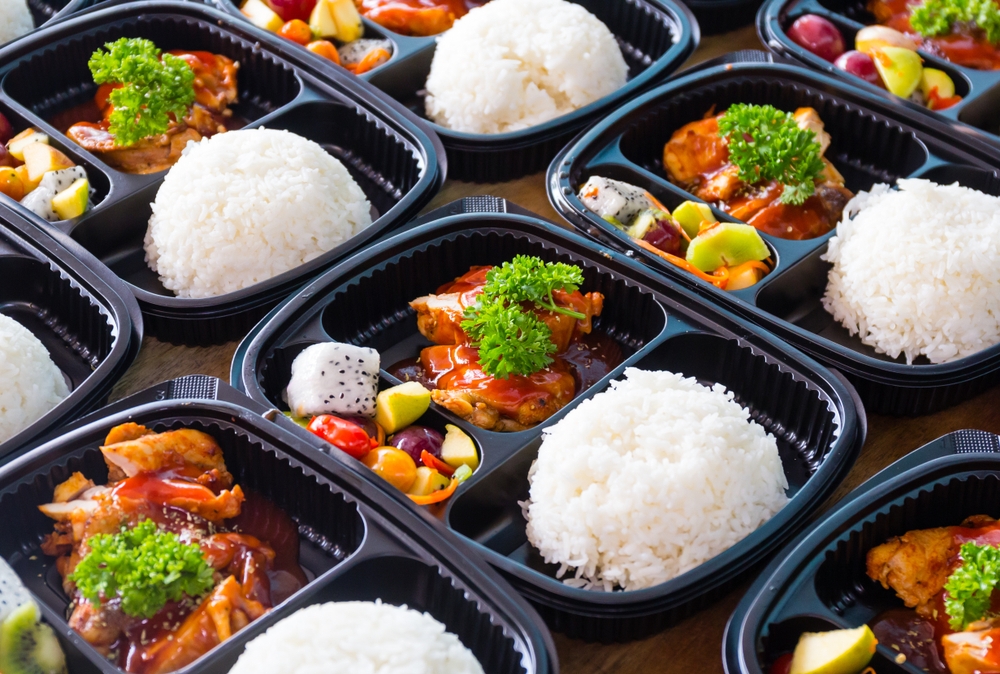 Alternative Takeaway plastic Container
Alternative Takeaway plastic Container
By now, you might be considering, “Perhaps I should just settle for cold leftovers.” But don’t despair!
There are plenty of alternatives to microwaving paper takeout boxes.
Whether it’s ovens, stovetops, toaster ovens, steamers, or even air fryers, there’s a world of options waiting to heat up your leftovers safely.
So, let’s explore these alternatives and find the one that suits you best!
Transfer to a Microwave Safe Container
If the safety of your paper takeout box🥡 is in question, simply transfer your food to a microwave-safe container.
Remember, it’s the container that needs to be microwave-safe, not the food!
Use ceramic, glass, or Pyrex microwave safe containers as they can withstand the heat without harmful leaching.
Arrange the food in the container in a thin, even layer, and opt for circular containers to avoid hot spots.
Other Heating Methods
Apart from microwaving, there are several other heating methods that can come to your rescue when dealing with leftovers.
Toaster ovens, for instance, offer a quick reheating option for items that should remain crispy or have a crust.
Broiling in a conventional oven is suitable for items like pizza and grilled meats that benefit from high heat.
Stovetop reheating is another common alternative, where food can be warmed in a pot or pan with added moisture from water or oil.
An Instant Pot can reheat food using steam and pressure, and an air fryer is excellent for reheating foods that should stay crispy.
Common Misconceptions and Mistakes
Having covered the basics of microwaving paper takeout boxes🥡, it’s time to debunk some common misconceptions and errors.
After all, knowledge is power, and debunking these myths can make your microwaving adventures all the more safe and successful.
One common misconception is that all foam containers are safe to microwave.
However, only those with a microwave-safe label should be used.
Another common mistake is overheating, which can damage the box and affect the food quality.
The Myth of Microwave-Safe Styrofoam
We’ll start our myth-busting journey with the notion that all Styrofoam is microwave-safe.
Styrofoam, or polystyrene, is frequently used for takeout containers due to its insulation properties.
However, microwaving Styrofoam is not recommended as it can release styrene, a potentially harmful chemical, into your food.
In fact, Styrofoam containers can release toxic fumes when heated in a microwave.
So, unless the container has a microwave-safe label, it’s best to avoid microwaving Styrofoam.
Avoiding Overheating and Melting
Another frequently made error that can cause several problems is overheating.
Starting with a lower time setting and adding more if needed can help prevent overheating or burning the paper takeout box.
Also, leaving the container lid not sealed tightly during microwaving allows steam to escape, preventing pressure buildup that could deform the box.
Heating the food in intervals, stirring in between, and checking the temperature can ensure even heating without excessive temperatures that could damage the container.
Preserving Food Quality While Microwaving
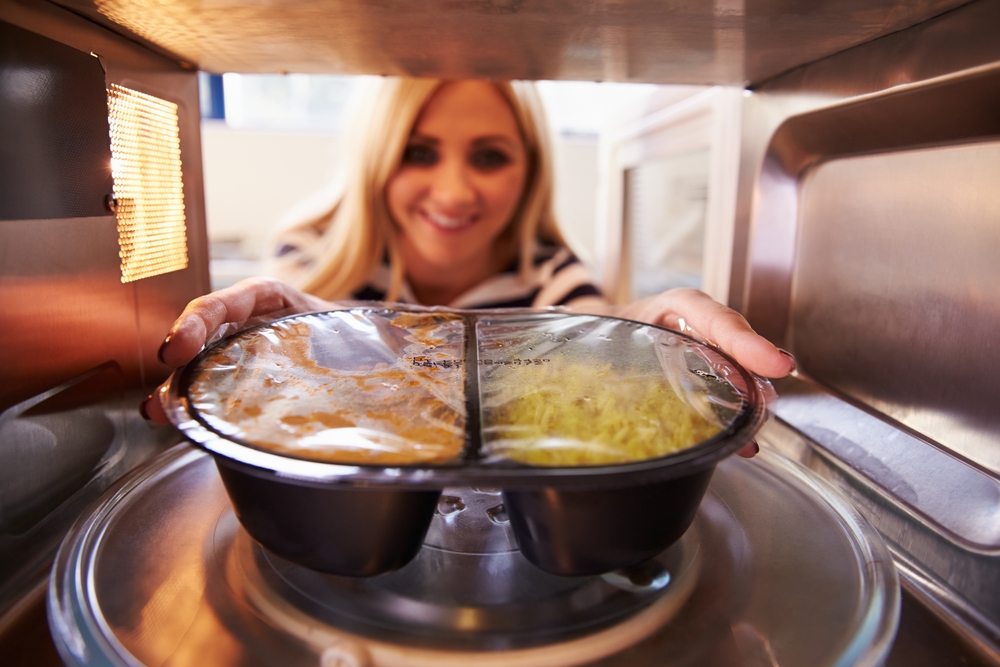 woman putting dinner into microwave
woman putting dinner into microwave
Microwaving isn’t just a matter of safety; it’s equally about maintaining your food’s quality.
After all, nobody likes a rubbery piece of chicken or a dry slice of pizza.
The key lies in covering your food, using parchment paper or paper towels, and stirring or rotating your food for even heating.
Sounds simple, right?
But these small steps can make a significant difference in your microwaving results. Let’s dive a bit deeper.
Using Parchment Paper or Paper Towels
Using damp paper towels or parchment paper is an effortless way to retain food moisture while microwaving.
You can use paper towels, wax paper, and parchment paper in the microwave without any concerns.
However, it’s important to note that not only paper plates and bowls, but also microwave paper plates are safe for microwaving.
You can also utilize steam to reheat foods like rice, quinoa, and vegetables, which not only preserves nutrients but prevents dryness.
So, the next time you’re reheating your food, remember to cover it up!
Stirring and Rotation for Even Heating
Finally, to ensure even heating and avoid cold spots, consider stirring or rotating your food during microwaving.
Use short bursts of microwaving and stir food in between to achieve even heating.
Stir or rotate food halfway through the heating process to distribute heat more evenly and avoid localized overheating.
This simple step can significantly improve your microwaving results and give you a warm, evenly heated meal every time!
Summary
We’ve journeyed through the world of microwaving paper takeout boxes together, and hopefully, you now feel more confident about reheating your leftovers.
We’ve decoded the symbols, debunked the myths, and revealed essential safety tips to ensure your microwaving sessions are safe and successful.
So, the next time you bring home a paper takeout box, don’t let the fear of microwaving stop you.
Remember, knowledge is power, and with the right information at your fingertips, you’re more than equipped to master the art of microwaving.
Frequently Asked Questions
Can you microwave paper Chinese takeout?
Yes, you can microwave paper Chinese takeout containers, just make sure to remove any metal handles first. Go for it, but watch out for those metal bits!
Can I microwave my food in a cardboard box?
Nope, it’s best to avoid microwaving food in a cardboard box as it can be a safety hazard with potential fire risks and harmful materials.
How do I know if my container is microwave safe?
Look for a symbol on the bottom of the container – it’s usually wavy lines. If you see a #5 or the letters PP, it’s considered microwave safe.
What do the symbols on my takeout box mean?
The symbols on your takeout box indicate whether it is safe to microwave. Look for wavy lines or a microwave with wavy lines inside to know if it’s safe.
What should I do if my takeout box has metal components?
Remove any metal components from your takeout box before microwaving to prevent sparking or fire hazards.

